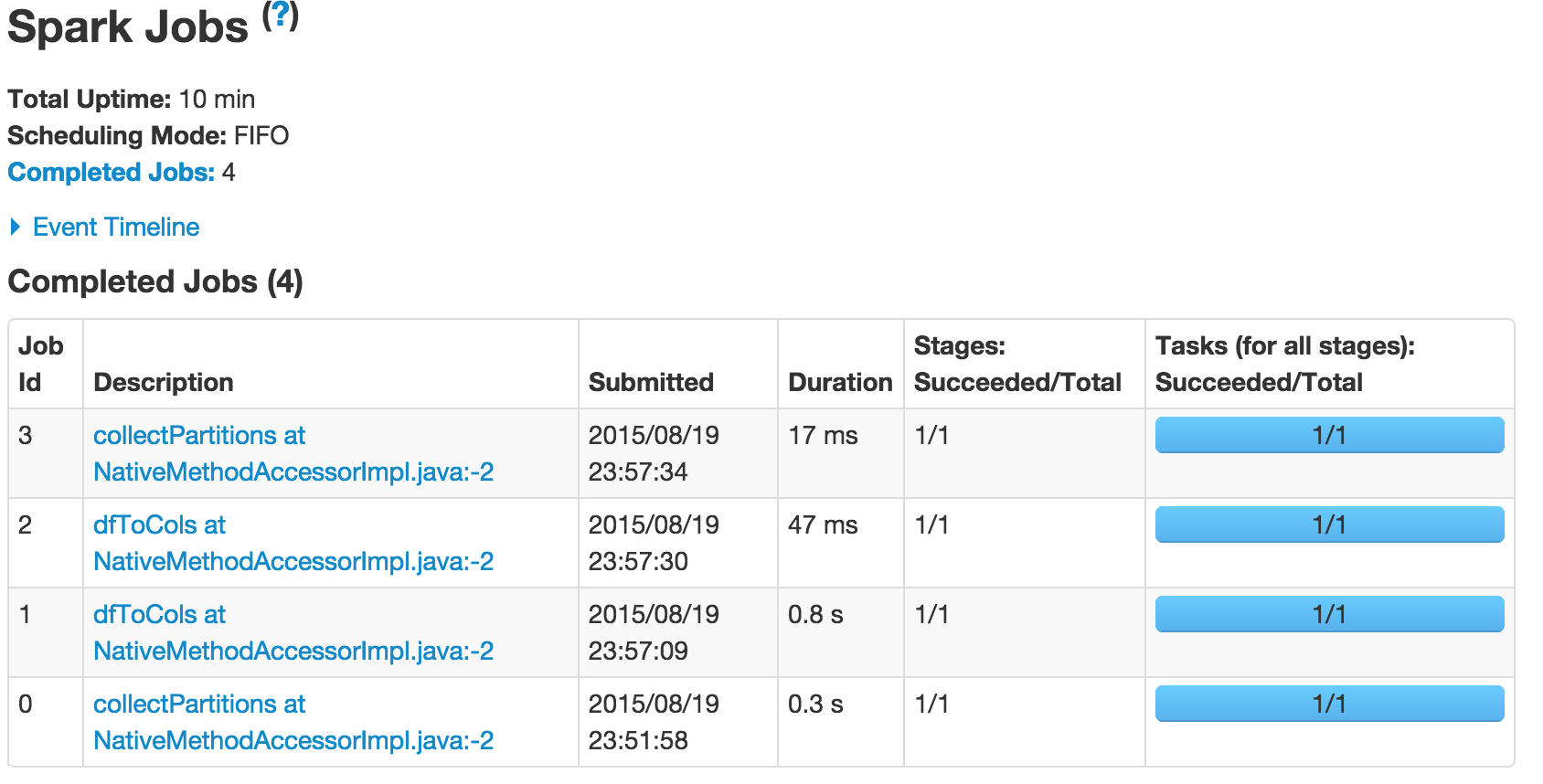The release of Apache Spark 1.4 brought some much awaited and exciting news to R users working with big data. Along with Scala and Python, spark now allows for R to interact with the spark core API through RDDs using the SparkR package.
SparkR initially started off as an independent project at AMPLab Berkeley, however the project got merged with the Apache Spark project in April 2015 and now officially ships with the Apache Spark adistribution 1.4 onwards.
Upgrade Hadoop to use Spark 1.4
In order to get sparkR, you will need to first upgrade (or install) the spark distribution on your Hadoop to 1.4 or later. As of writing this post, the latest version is 1.4.1. You can start by downloading a prebuilt version for your appropriate Hadoop distribution and unpacking. In my case
root@xxxxx:~# wget http://d3kbcqa49mib13.cloudfront.net/spark-1.4.1-bin-hadoop2.4.tgz
root@xxxxx:~# tar -xvf spark-1.4.1-bin-hadoop2.4.tgz
root@xxxxx:~# mv spark-1.4.1-bin-hadoop2.4 /srv/
If you are upgrading, also update any links associated with your old spark distribution
root@xxxxx:~# ln -s /srv/spark-1.4.1-bin-hadoop2.4 /srv/spark
Next you may have to redo your environment specific config changes if any. In my case the only one I cared for now was to make the logging less verbose. We can edit the log4j.properties to change log4j.rootCategory=INFO, console to log4j.rootCategory=WARN, console
hadoop@xxxxx:~$ cd /srv/spark/conf
hadoop@xxxx:/srv/spark/conf$cp log4j.properties.template log4j.properties
That's it you are done. Log into the the sparkR shell
hadoop@xxxxx:/srv$ cd spark
hadoop@xxxxx:/srv/spark$ bin/sparkR
.
.
Welcome to SparkR!
Spark context is available as sc, SQL context is available as sqlContext
>
The Spark context is available as sc, SQL context is available as sqlContext. If you are working from the SparkR shell, the SQLContext and SparkContext should already be created for you.If not, you can create them manually
sc <- sparkR.init()
sqlContext <- sparkRSQL.init(sc)
SparkR Data Frames
Let's start by creating a simple local R data frame.
>localDF<-data.frame(name=c("Ana","Anna","Sarah","Tina","Tom"),age=c(11,12,8,10,12))
> localDF
name age
1 Ana 11
2 Anna 12
3 Sarah 8
4 Tina 10
5 Tom 12
Next, convert the local R data frame to a spark data frame - SparkR DataFrames support a number of functions to do structured data processing. Few examples
> sDF<-createDataFrame(sqlContext,localDF)
> head(select(sDF, "name"))
name
1 Ana
2 Anna
3 Sarah
4 Tina
5 Tom
> head(filter(sDF, sDF$age > 10))
name age
1 Ana 11
2 Anna 12
3 Tom 12
In addition SparkR data frames support a number of commonly used functions to aggregate data after grouping.
This time let's use the faithful example local data frame 'faithful' that comes with the spark distribution. First we will convert it to a spark DF using sqlContext
faithDF <- createDataFrame(sqlContext, faithful)
> head(faithDF)
eruptions waiting
1 3.600 79
2 1.800 54
3 3.333 74
4 2.283 62
5 4.533 85
6 2.883 55
> head(summarize(groupBy(faithDF, faithDF$waiting), count = n(faithDF$waiting)))
waiting count
1 81 13
2 60 6
3 68 1
4 93 2
5 80 8
6 47 4
Setting up RStudio with SparkR
RStudio, the defacto IDE for for R is also pretty easy to setup to work with SparkR, both for the desktop and the server versions. The steps below are for RStudio server, but the desktop one shouldn't be much different.
Set a environment variable inside RStudio to point to your Spark home and the library paths for Spark. Next just load SparkR as you any other R package
> Sys.setenv(SPARK_HOME="/srv/spark")
> .libPaths(c(file.path(Sys.getenv("SPARK_HOME"), "R", "lib"), .libPaths()))
> library(SparkR)
Attaching package: ‘SparkR’
Before you can using SparkR from Rstudio, you will need to create the spark context and initialize the sqlContext manually. Remember is created automatically only when you use sparkR from the console.
> sc<-sparkR.init()
Launching java with spark-submit command /srv/spark/bin/spark-submit sparkr-shell /tmp/RtmpucYqcU/backend_port5e966f6f9d84
...
...
...
> sqlContext<-sparkRSQL.init(sc)
>
That's it, you can now run your R jobs using sparkR from within RStudio.
You can also view the status of your R jobs on spark from the standard spark UI. Just point your browser to http://myawesomeserver:4040

To stop the Spark context
This will also terminate the connected backend R session.
That's about it to get you started with exploring your data at scale using R on Apache Spark.